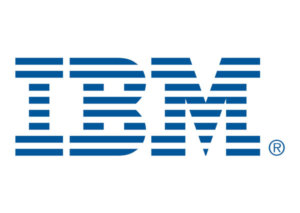Mark Harris: From VP at IBM to UA Professor
Published on February 27, 2018, at 9:33 a.m.
by Cara Bolt.
Mark Harris, former vice president of communications for Global Business Services at IBM, has completed a three-decade career, which included a role as a senior communications advisor and speechwriter for Lou Gerstner, the CEO widely credited with saving IBM in the 1990s. In the role of VP of global business services, Harris led executive support, media relations and communications to a workforce of more than 100,000 people. He also led the announcement of IBM’s landmark partnership with Apple in 2014. Shortly after retiring in 2017, Harris took a position as a professor of practice with The University of Alabama — returning to his alma mater to teach in the Department of Advertising and Public Relations.

Career and leadership
As Harris describes, it’s 1993, and IBM’s net losses are at $8 billion (a record for any company at that time) and the company’s board of directors is seriously considering a plan to save parts of IBM by dividing the company into smaller, more focused businesses. At the time Louis (Lou) V. Gerstner was “lured to IBM from RJR Nabisco (a startling appointment, given his lack of background in the information technology industry) there were very real questions about the company’s chances for survival, much less regaining industry leadership.”
As a member of the communication team supporting Gerstner, Harris felt that this was the “experience of a lifetime.” It’s often assumed that speechwriting is a solo undertaking. Harris pointed out that speechwriting is a highly collaborative effort, with the most important collaborator, by far, is the senior executive.
“We [the team] were fortunate to have front-row seats to the mastery of Gerstner as he engineered one of the most important transformations in business history. That’s an accurate description for a range of reasons, but starting with IBM’s scale, resources and the intelligence to create real value, actually change things for the better — in areas like healthcare, education, commerce — and improve the quality of life for millions of people,” Harris said. Gerstner kept the company together, galvanized IBM and the industry around the concept of “e-business” in the early days of the internet revolution, and in 1997, IBM introduced Deep Blue, a computer program that could play chess on a master level and began IBM’s push to leadership in artificial intelligence. IBM was able to reposition itself as an industry leader.

In 2014, the mobile computing revolution was reshaping every expectation people have for access to information, communications and convenience, and IBM saw an opportunity to lead this shift to mobile devices for business, in partnership with Apple, the company that had redefined the consumer experience with the iPhone. Harris described the partnership as the marriage of two “gold standards” — IBM in business computing and Apple’s intuitive design and understanding of the consumer — to do something neither company could do by itself. The partnership allowed for Apple to expand into a different market (the private enterprise sector) and presented an opportunity for growth for IBM.
IBM General Manager of Partnerships and Alliances Fred Balboni said that it was a partnership where both players were initially suspicious of one another and came to the idea of a partnership from very different cultural starting points. To prove the point of the negative history between the two companies, Balboni brought up the photo of Steve Jobs giving a rude hand gesture to an IBM sign.
“It was a great test for Mark and me,” Balboni said. “He was my wingman. Mark ‘got’ the partnership on the most basic level. He recognized that it was an inflection point in history where IBM could do a right-hand turn and blow everyone’s minds.”
Harris himself shared that the months leading to the announcement involved a lot of negotiations between Apple and IBM. “You can imagine it,” he said. “Two giants in the industry, both used to being right, and both used to getting their own way. But both able to stay focused on the big picture, and do something together that shocked the industry and created a new level of value for our clients.”
Currently, the Apple-IBM partnership is strong. In early 2017, IBM opened “Garages,” which are “dedicated physical spaces” to help corporate customers sit with joint design and development teams from IBM and Apple while they experiment with and influence the features and function of new MobileFirst iOS apps.
“It succeeded wildly,” Harris said. “It [the partnership] changed computing for business at the level of individuals. We all believed we were doing something that could ‘change the nature of work’ — that was the design point — and that’s how it’s playing out.”
One of the leadership qualities that Tara Archer, vice president of workforce communications at IBM, also remembered was that Harris always made time for people, and whenever she emailed him to ask if he could look over a memo, he replied within five minutes.
“He prioritized his time for people,” Archer said.

A University of Alabama professor
Fresh off of retirement, Harris was offered the opportunity to return to UA as a professor of practice. He enjoyed retirement but jumped at the chance to return. Harris holds B.A. and M.A. degrees in journalism and is teaching APR 427: PR Leadership, a class where students gain experience in argumentation, self-awareness, and of course, leadership.
“It is an amazingly terrific experience,” Harris said. “Because I am a graduate of this program, I have an acute interest in these students, and I have a sense of responsibility in seeing that they are prepared.”
“Mark is so generous,” Archer said. “He was bound to be a professor.”
Harris’s advice to students? “I once believed that I needed to have a plan for the management of my career — where was I going to be in two, five years, 10 years. I now believe that that is absolute nonsense. You can’t control it, you can’t really plan it, and you certainly can’t game it. But what you can control is doing the job at hand, and trust that if you make it about the work, and not yourself, the right things will happen.”




